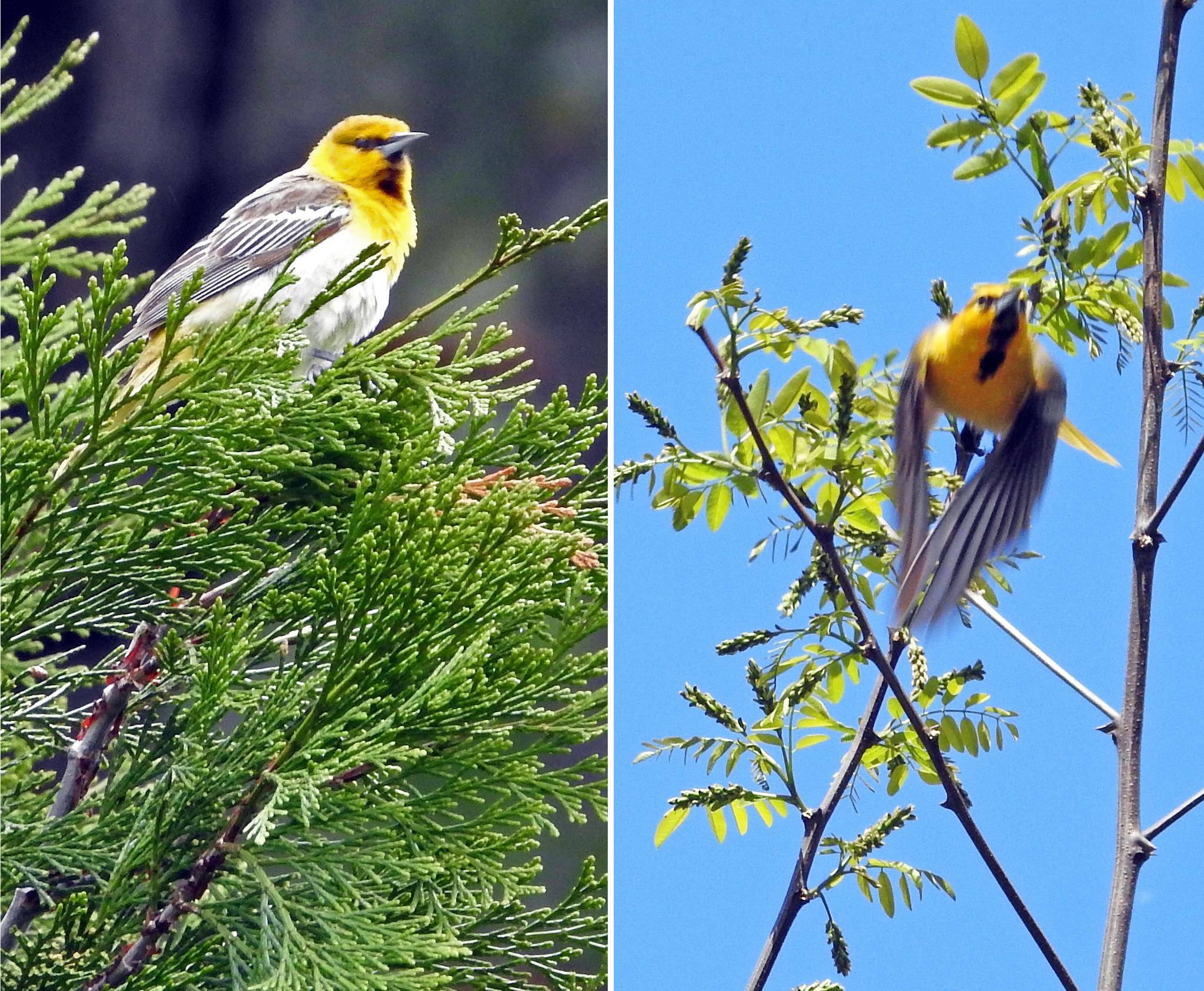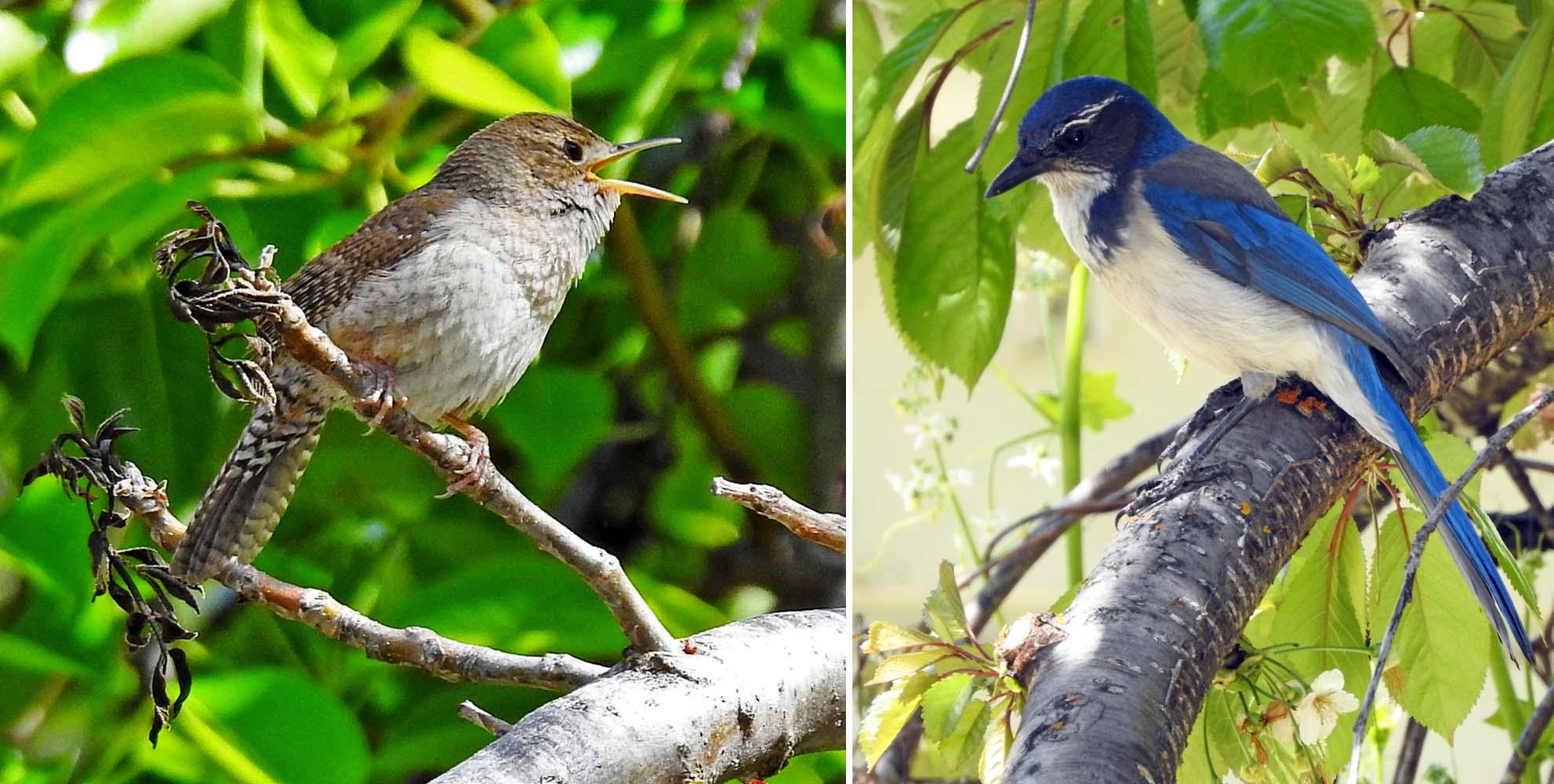Neighborhood News! Part 2
May 22, 2024

Bullock’s Oriole (adult male - 1st year male) — Icterus bullockii
Bullock’s Orioles are LONG distance migrants. They migrate down to central Mexico and northwestern Costa Rica for the winter, a distance of over 4,000 miles! In the Spring, they migrate back up to the western half of the U.S. to breed and raise their young.
This year, the first male Bullock’s Oriole arrived in our neighborhood on April 21st! Since then I have also seen a 1st year male, maybe two, in a particular area of our neighborhood. I have not as yet seen a female, but that doesn't mean that there isn't one in the area. I’m thrilled that they are back, as last year, not one nested in our neighborhood!

Bullock’s Oriole (1st year males) — Icterus bullockii
1st year males look a lot like the females, except for the dark black stripe that extends down from their beak onto their chest. Adults mainly feed on insects, but also eat fruit and plant nectar.

Black-headed Grosbeak (female) — Pheucticus melanocephalus
I saw the first male Black-headed Grosbeak on April 12 this year! Just this week, the females have arrived! They will pair off soon, and start nesting. They migrate to our neighborhood from southern Mexico, a distance of approximately 2,700 miles!

House Wren (adult) — California Scrub-Jay (adult)
Troglodytes aedon — Aphelocoma californica
Every Spring two House Wrens establish their territories down the road from our home. They are short distance migrants and probably spend the winter in the foothills of California. They will breed and raise their young in our neighborhood! I’ve only seen their tiny fledglings once! So cute! Hope I see them again this year!
A Scrub Jay just arrived this week! What a surprise! They are year-round residents of the foothills, and rarely come up to our elevation. Every once in a while, one of them shows up and hangs out for a bit. I thing they’re just gorgeous and are a real treat to see in our neighborhood!

Olive-sided Flycatcher (adult) — American Dipper (adult)
Contopus cooperi — Cinclus mexicanus
In the field guides, the Olive-sided Flycatcher’s repeated call is “What peeves you?” When you hear it in the field, the accent is definitely on “peeves.” We think a better phrase would be “We love you,” with the accent on “love!” This little gray and white bird is another LONG distance migrant. The majority of these birds breed across northern Canada and southeastern Alaska. In the fall they will migrate south to southern California, or Mexico, or Central America, or maybe even as far south as Bolivia, a distance of approximately 5,300 miles!!
I wanted to update you on the status of the American Dipper nest that I wrote about on April 12th. The nest is still intact and the parents are flying back and forth feeding the nestlings! Yay! I’ll post more photos soon! So glad that they’re being successful this time around!
Your questions and comments are appreciated. Please feel free to email me at northyubanaturalist@gmail.com. Thanks!
Featured Articles

Sierra Hardware Plans Extensive Repairs After Flood Damage →
December 8, 2025
Sierra Hardware faces extensive repairs after Thanksgiving flood damages store flooring and drywall.
Sheriff’s Office Accepts $60,000 Grant for New Search and Rescue Team →
December 2, 2025
Confusion Surrounds Release of the Plumas County Grand Jury’s Report →
December 4, 2025
WCB Considers Grant for Sierra Valley Tribal Land Purchase →
Updated November 22, 2025
Downieville Fire Auxiliary Hosts Annual “Holiday on Main” Event Saturday →
December 2, 2025